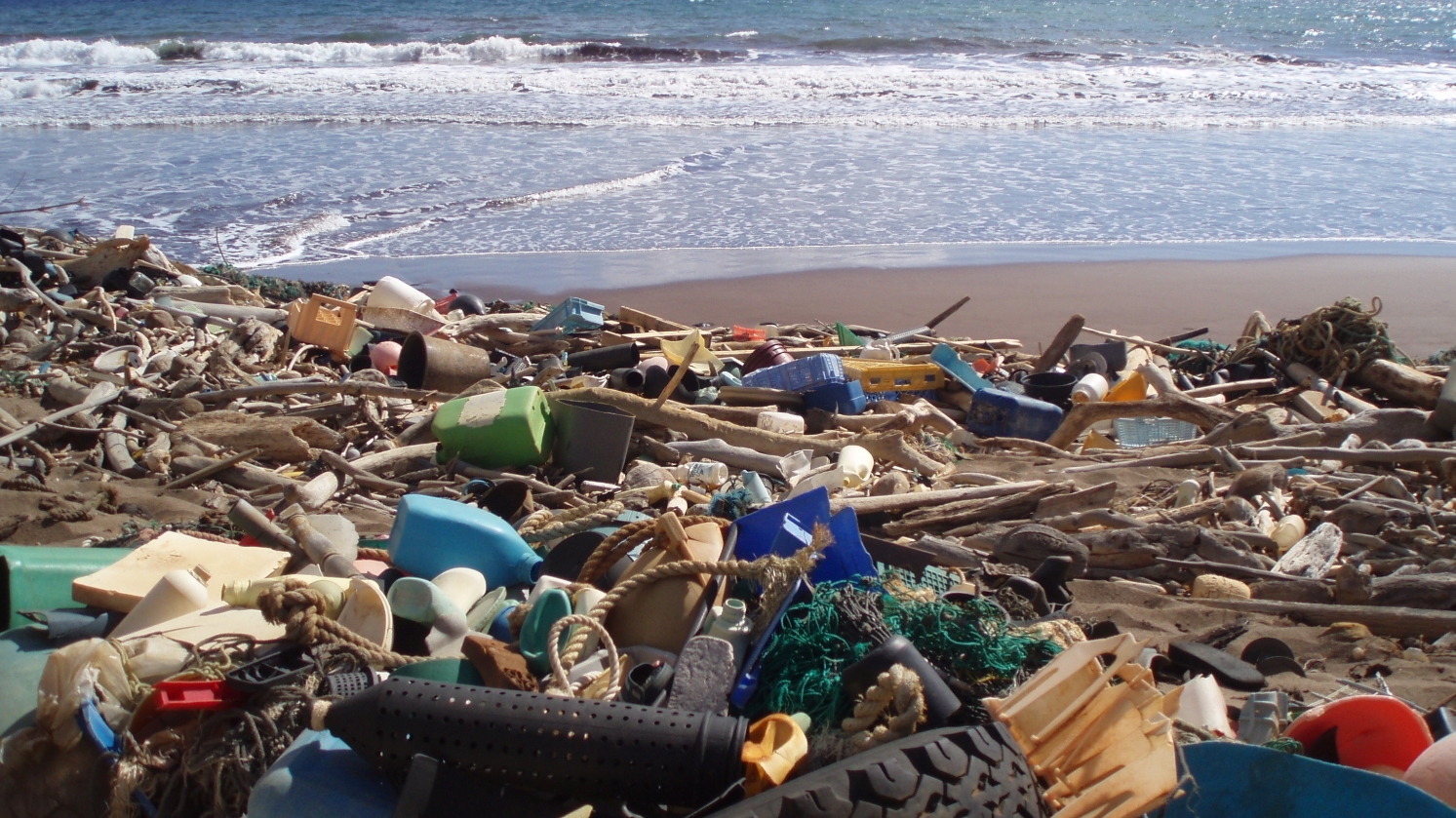What Happens to Plastic Trash?

Researchers found “microplastics” in 59 of 60 samples in near-shore waters.
If you’ve been a follower of our blog, you read back in late April about how plastic debris represents an emerging threat to wildlife due to its abundance and persistence in the environment, as well as its tendency to break into smaller pieces, called “microplastics.”
Microplastics can enter waterways, and tiny plants and animals at the bottom of the food web ingest them. In turn, fish eat these small organisms and, of course, we eat the fish.
But, does the risk of doing so vary depending on where you live?
Research Need
The sheer amount of plastic that humans throw away is staggering and easy to see along roadsides, in landfills, and on waterways. But what is the exact fate of plastic bags and bottles, for instance, after they break down into microplastics?
While research has extensively documented microplastic marine debris in large systems of circulating ocean currents, not much is known about near-shore waters.
What did they study?
Researchers collected microplastics in surface waters of the Chesapeake Bay to compare them with historical concentrations. They sampled across multiple seasons and sites with differing land-use characteristics and population densities.
The team used a surface trawl with mesh net to capture floating material to a depth of near 6 inches. They sampled each of the four sites three times per day on five discrete occasions for a total of 15 water samples per location, allowing for rigorous statistical comparisons.
Researchers used sieves to separate microplastics by material groups that included: synthetic fibers, thin flexible sheets, hard multicolored fragments of various sizes, extruded polystyrene (e.g., Styrofoam), and preproduction pellets — the building blocks for plastic bottles, plastic bags, and more.
What did they find?
The research team found microplastics in all but one of 60 samples. Overall, concentrations of microplastics were generally low. The samples also were variable across sample locations and time periods.
Yet, patterns in variety and concentration suggest several factors influence the introduction and dispersion of plastics into marine systems: proximity to human population centers and river mouths, prevailing ocean currents, and weather events.
Anything else?
This research, while from 2011, is one of the seminal studies on quantifying microplastics in estuarine waters. The study established baselines for future aquatic pollution and water-quality monitoring. Also, these findings support prioritizing upstream prevention efforts in urban locations.
Reading
Yonkos, L.T., Friedel, E.A., Perez-Reyes, A.C., Ghosal, S., and C.D. Arthur. 2014. “Microplastics in Four Estuarine Rivers in the Chesapeake Bay, U.S.A.” Environmental Science & Technology 48: 14195−14202.
This study was supported by the National Oceanic and Atmospheric Administration (NOAA) and the National Marine Sanctuary Foundation (NMSF).
Summary compiled by Sara Mirabilio
Above photo: courtesy of NOAA
The text from Hook, Line & Science is available to reprint and republish, but only in its entirety and with this attribution: Hook, Line & Science, courtesy of Scott Baker and Sara Mirabilio, North Carolina Sea Grant. HookLineScience.com
- Categories:



